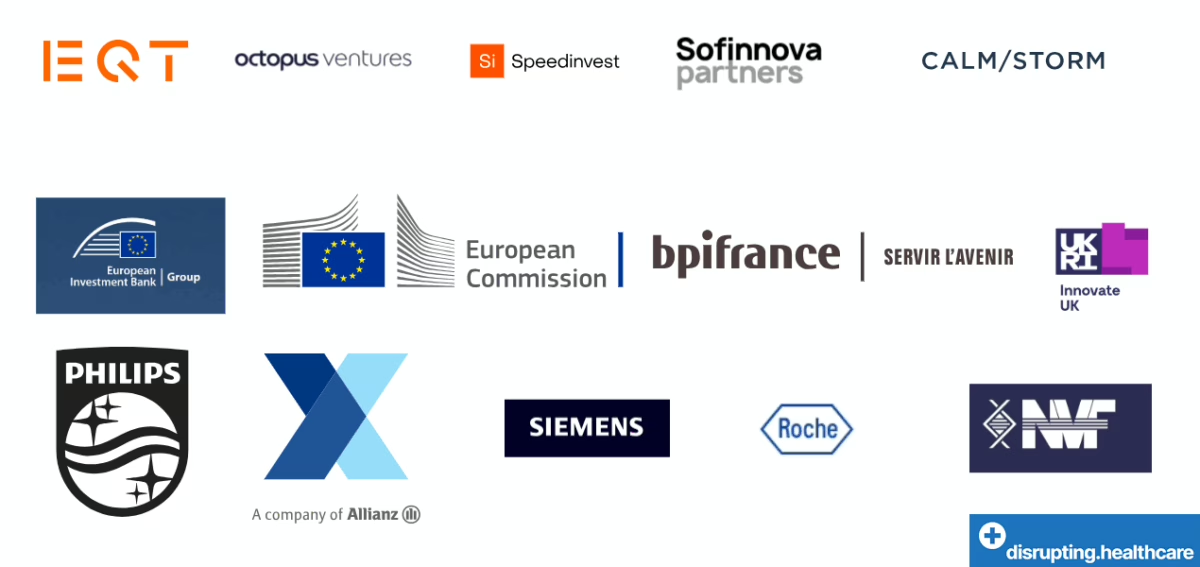The VCs, public funds, and CVCs writing cheques in European healthtech (2025 edition)
Healthtech funding in Europe is accelerating again.
After a cautious 2023, investment rebounded to $4.8 billion in 2024, and Q1 2025 alone brought in $4.3 billion. Healthtech now captures 30 to 35% of all venture activity across the continent. But who’s actually writing those cheques?
This post breaks down the capital stack behind Europe’s digital health growth: venture capital, public funds, and corporate/strategic investors. Whether you’re raising or deploying capital, here’s who you need to know in 2025.
1. Venture Capital: Still the Primary Engine
Venture capital is behind most of the major healthtech rounds in Europe. From seed to Series C, VCs provide the scaling fuel, validation, and network access.
Top 5 VCs Investing in European HealthTech:
- Sofinnova Partners: Paris-based life sciences fund active in healthtech, diagnostics, and therapeutics.
- Octopus Ventures: UK fund with a strong healthtech thesis, including femtech and digital care.
- Speedinvest: Vienna-based early-stage investor with a focus on digital health and care platforms.
- EQT Life Sciences: Nordic growth-stage investor in diagnostics, medtech, and health platforms.
- Calm/Storm Ventures: Focused on pre-seed and seed-stage digital health across underserved areas like paediatrics and mental health.
Those five are consistently active in 2024-25, spanning early to growth-stage capital.
2. Public & EU Funding: De-risking and Catalysing Growth
Public funding rarely leads rounds, but often enables them. Grants, co-investments, and match funding are key to bridging early clinical stages and reimbursement pilots.
Key Public Funding Sources for HealthTech in Europe:
- Horizon Europe: EU R&D programme with dedicated tracks for health and medtech.
- EU4Health: €5.3 billion programme for health system resilience and digitalisation.
- European Investment Bank (EIB): Committed €70 billion (2025-27) to tech, including health innovation.
- Bpifrance: France’s national investment bank, active in medtech, digital health, and AI.
- Innovate UK: Grant and co-investment body supporting UK healthtech pilots and R&D.
Yes. Programmes like Horizon Europe, EIC Accelerator, and EU4Health fund clinical validation, digital health infrastructure, and medtech scale-up.
3. Corporate Venture & Strategic Investors: Validation with Capital
CVCs and strategic investors are increasingly active in Series B+ deals. They offer more than capital, including access to clinical settings, distribution, and potential M&A.
Key Corporate Venture Funds:
- Philips Ventures: Investing in digital diagnostics, patient monitoring, and chronic care.
- Siemens Venture Capital: Backing healthcare IT and clinical platforms.
- Allianz X: Strategic investor in digital health and insurance-integrated platforms.
- Roche Venture Fund: Biotech and digital biomarker investments.
- Novartis Venture Fund: Strong focus on techbio and digital therapeutics.
Yes. In 2025, CVCs from pharma, medtech, and insurance are increasingly co-investing in digital health.
Estimated Funding Breakdown (2025):
| Source | Share Estimate | Role |
|---|---|---|
| Venture Capital / PE | 65–75% | Lead rounds, scale capital |
| Public Funds / Grants (EU + National) | 10–20% | Early-stage, pilots, non-dilutive |
| Corporate / Strategic / CVC | 10–15% | Strategic fit, late-stage, distribution |
Insight: Most healthtech rounds in 2025 involve blended capital: a VC lead, public match-funding, and a strategic partner.
Strategic Takeaways
Founders: Match your capital to your stage. Grants and public co-investments work best pre-revenue or pre-regulatory.
Investors: Watch for startups with public funding traction—often a good de-risking signal.
Operators: CVCs are gatekeepers to reimbursement and go-to-market. Engage early, but be realistic on timing.
Next up: How the funding mix changed between 2024 and 2025, and what it signals about the future of EU healthtech capital.

